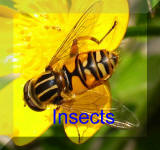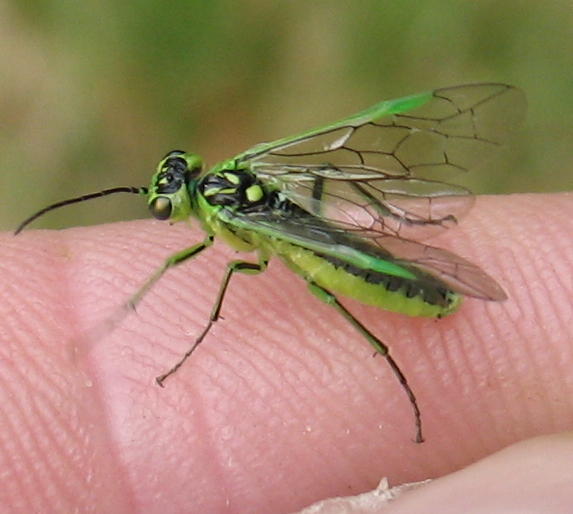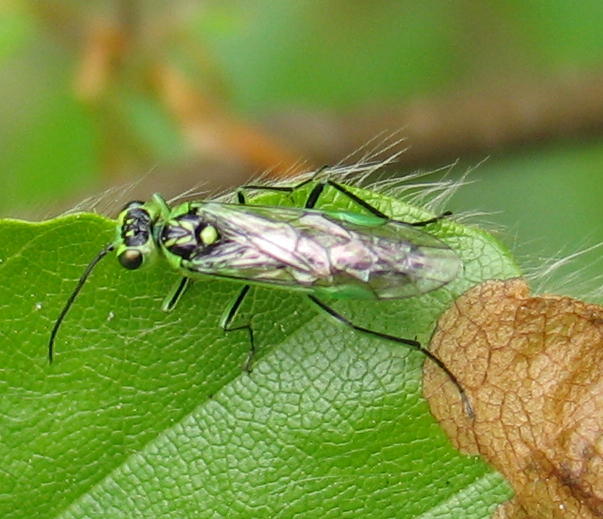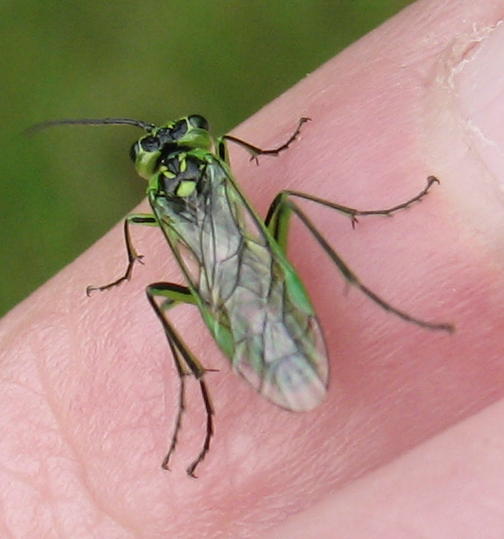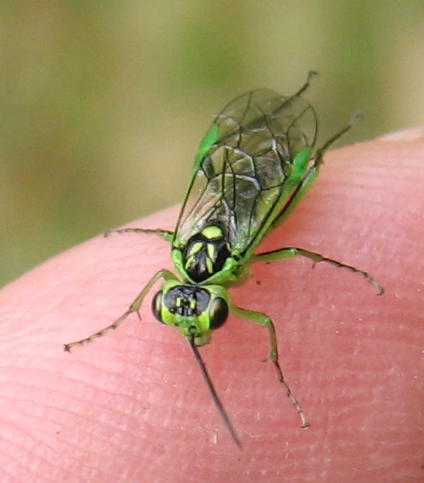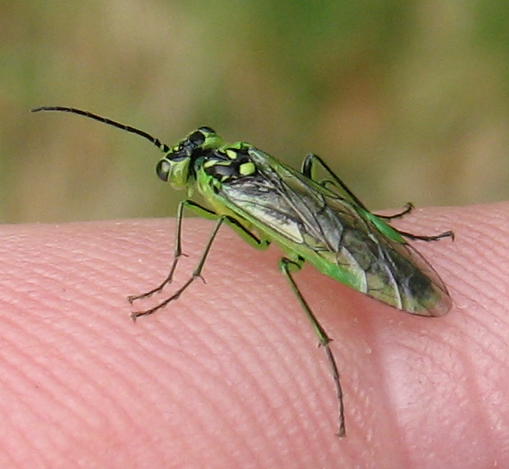Family: Tenthredinidae
CAUTION on similar species A common bright green sawfly, this species has striking black markings.The pterostigma (the coloured mark on the front edge of the wing) is uniformly green or yellow in this species and it has a small black line on side of its thorax. Usually there is a black band along the top of the abdomen. There are several closely-related species.
Phenology It flies from May to August
Similar Species
Separation R. viridis and R. chlorosoma in the field is difficult.Both have a variable amount of black but R. chlorosoma is generally paler.
The best character is the relative length of the pads on the back of the tarsal segments (called pulvilli) - these are about half the length of the following segment in (female) chlorosoma but shorter in viridis.
Thin line in the groove of the side is indicates viridis too but not entirely reliable as there may be sometimes a trace of a line in chlorosomaRhogogaster punctulata Similar Rhogogaster viridis, but with a pair of very small black dots at lateral edge of each abdominal segment.
Larvae
The female uses her saw-like ovipositor (egg laying tube) to cut into plants where she lays her eggs. The larvae are very similar to caterpillars.Larvae are more likely observed than the adult form , which spend much time crawling among vegetation. Some other saw-flies are specialist feeders on fruit like apples or gooseberries but this species is not a problem in the garden.
Food
Plant feeding on a very wide range of trees, shrubs and herbaceous plants.Habitat Visit a range of habitat looking for small insects on flowers
IMAGE 17748 (C) 2008 COLIN DUKE
IMAGE 17742 (C) 2008 COLIN DUKE
IMAGE 17744 (C) 2008 COLIN DUKE
IMAGE 17747 (C) 2008 COLIN DUKE
IMAGE 17749 (C) 2008 COLIN DUKE

